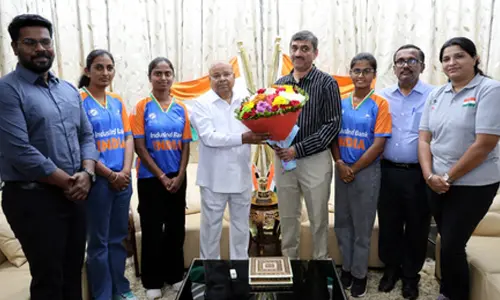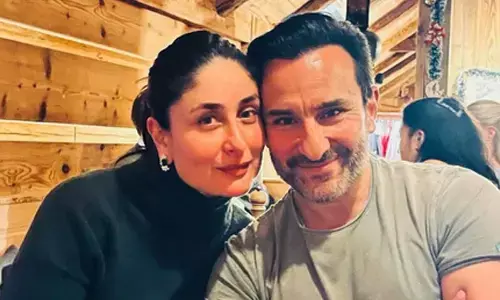Innovating ways to help kids enjoy music education

Raaga Pop-uses stories
The book- Bounce, Hop, Raaga Pop-uses stories to generate interest in music in children and inspire them to learn and sing more
Indian classical music and mathematics are intrinsically linked to each other. A Raag is a pattern created using notes, which is then fit into Taal or metre, to generate a melody.
Meet Shyama Panikkar, the founder of Sur Taal aur Masti, an Indian music enrichment programme for children. After her first book 'A Musical Road Trip' now she has come up with her second book named 'Bounce, Hop, Raaga Pop' which launched recently. Both the books are written around the theme of Indian classical music.
"My vision is to make Indian classical music a part of early years education in India. My classes are synonymous with what they are called. Sur - Music, Taal - Rhythm, and lots of Masti. The books also use stories to generate interest in music in children and to inspire them to learn and sing more."
Talking about the book Shyama says, "Bounce, Hop, Raaga Pop is a book in which the characters create music through a hopscotch game. Many children, even adults, have a perception that classical music is boring and difficult. The book aims to break these myths and show them, kids, jumping on a hopscotch chart and singing and enjoying it thoroughly.
Also, I've always been inspired by the relationship between music and mathematics. Indian Classical music cannot exist without mathematics. In the book, I've shown kids making Musical patterns within beats. And I've prompted them to make their own patterns. This will improve their logical abilities and also encourage them to be creative.
Bounce, Hop, Raaga Pop is a story about 4 children - Riaan, Nyra, Anup, and Veda decide to play a game of hopscotch and instead of numbers, they write Sa Re Ga Ma Pa Dha Ni Sa in the squares. They then jump and sing different musical patterns, accompanied by an orchestra of raindrops, parrots, anklets, and bouncing balls.
The book has been illustrated by Radhika Tipnis. The illustrations are warm and earthy and instantly likeable. There is a lot of learning encapsulated in the book, without making it too overwhelming. Every kid who reads the book will learn and enjoy it as well.
When asked about how she selected the names of the characters, Shyama Panikkar says, "Honestly, I'm heavily inspired by the names I'm surrounded by. I teach so many kids, so I picked a few names from there. Riaan and Nyra live in Mumbai and are visiting Kerala, their names are more urban. Anup and Veda live in Kerala, so I've kept their names more traditional. Basically, the names should be relatable, the names children are surrounded by. It would help them relate to the characters and story more."
What kind of research did you do for this book?
The idea of hopscotch came to me during my classes. All classical Raags have an Aaroh and Avaroh - an ascending and a descending. A hopscotch chart is a wonderful tool for making patterns wherein the kids can combine music and movement and have so much fun. There is not much research involved, it's a simple story and it's just me trying to find new innovative ways to help children enjoy their music education.
"I would say, it's very important to have a theme around which the story is built. I always develop the storyline in my mind and then write it down in basic language. Then I develop the characters and setting and keep revisiting and adding nuances.
It's best to not be in a hurry, give yourself ample time and enjoy the process. My 5-year- old son is an avid reader and I'm surrounded by children's books, so reading a lot of other authors has also helped me write on my own."
"I have students from all over the world learning from me virtually. I intend to grow it further and take classical music to as many kids as possible. I do wish to write more books, but music will be a common theme for whatever I write, it's my niche and I wish to stick to it." she adds
The book also includes an activity for children to try on their own once they read the book, and a QR code which can be scanned to listen to the audio patterns in the book, in the author's voice.
Many children, even adults, have a perception that classical music is boring and difficult. The book aims to break these myths and show them kids jumping on a hopscotch chart and singing, and enjoying it thoroughly
—Shyama Panikkar














